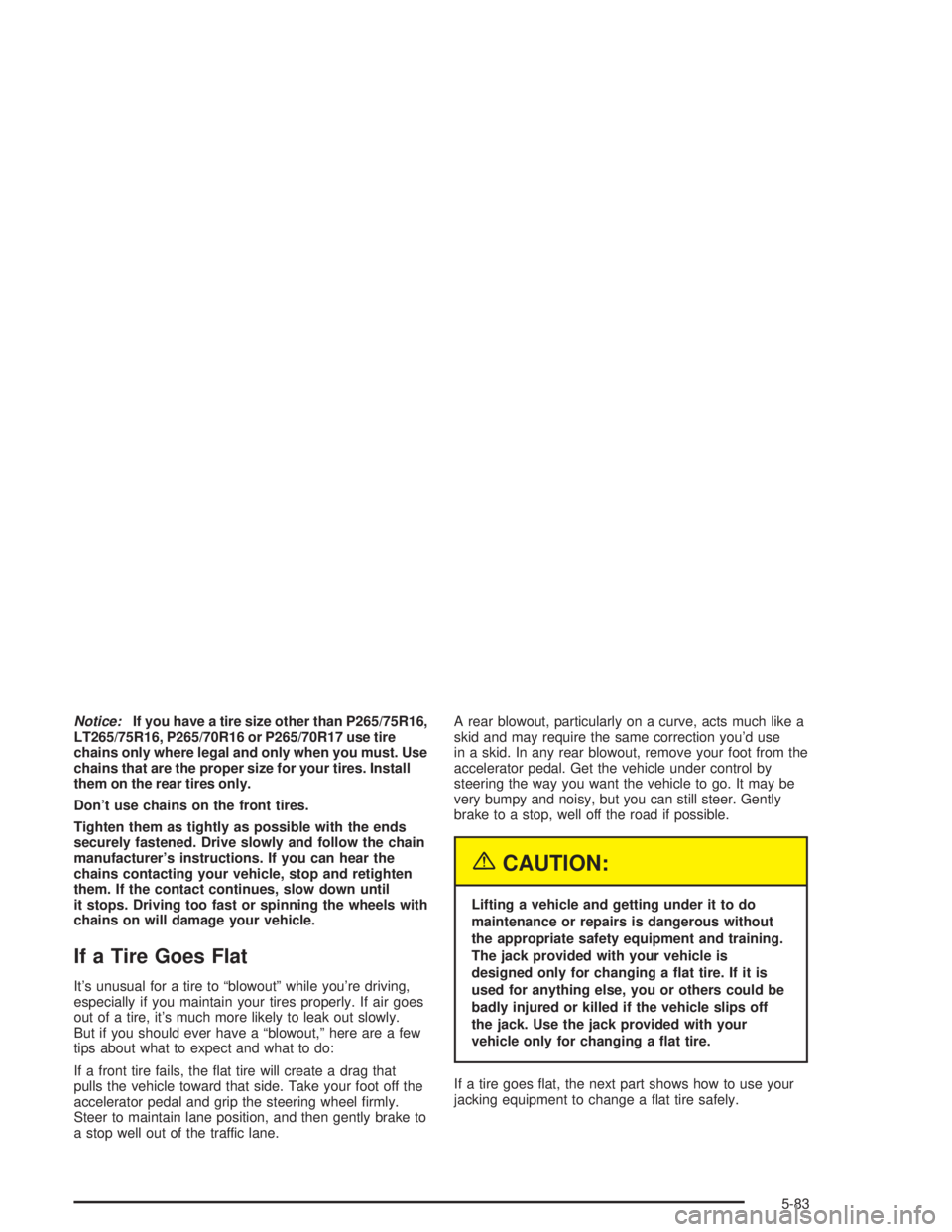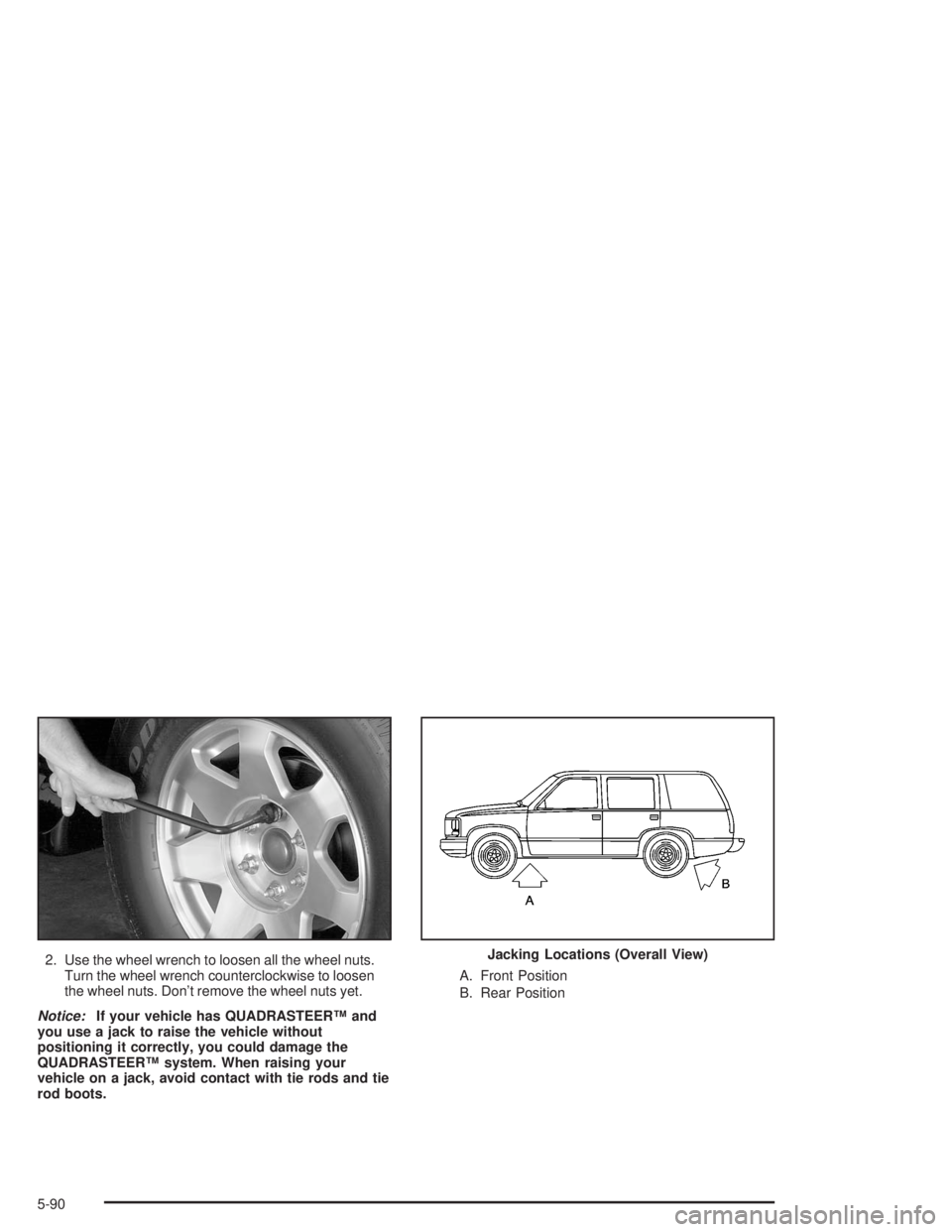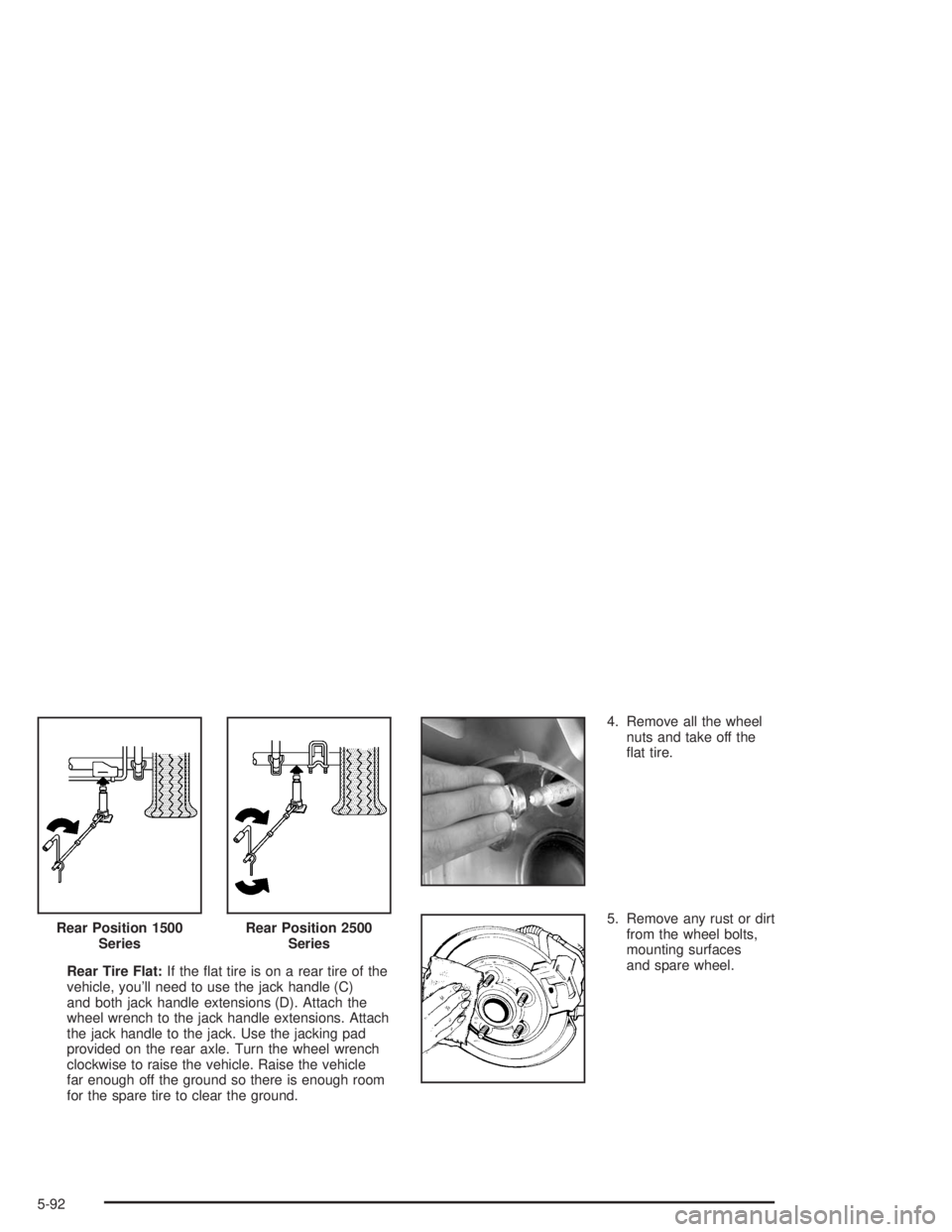jacking GMC YUKON 2004 Owner's Manual
[x] Cancel search | Manufacturer: GMC, Model Year: 2004, Model line: YUKON, Model: GMC YUKON 2004Pages: 554, PDF Size: 5.21 MB
Page 463 of 554

Notice:If you have a tire size other than P265/75R16,
LT265/75R16, P265/70R16 or P265/70R17 use tire
chains only where legal and only when you must. Use
chains that are the proper size for your tires. Install
them on the rear tires only.
Don’t use chains on the front tires.
Tighten them as tightly as possible with the ends
securely fastened. Drive slowly and follow the chain
manufacturer’s instructions. If you can hear the
chains contacting your vehicle, stop and retighten
them. If the contact continues, slow down until
it stops. Driving too fast or spinning the wheels with
chains on will damage your vehicle.
If a Tire Goes Flat
It’s unusual for a tire to “blowout” while you’re driving,
especially if you maintain your tires properly. If air goes
out of a tire, it’s much more likely to leak out slowly.
But if you should ever have a “blowout,” here are a few
tips about what to expect and what to do:
If a front tire fails, the �at tire will create a drag that
pulls the vehicle toward that side. Take your foot off the
accelerator pedal and grip the steering wheel �rmly.
Steer to maintain lane position, and then gently brake to
a stop well out of the traffic lane.A rear blowout, particularly on a curve, acts much like a
skid and may require the same correction you’d use
in a skid. In any rear blowout, remove your foot from the
accelerator pedal. Get the vehicle under control by
steering the way you want the vehicle to go. It may be
very bumpy and noisy, but you can still steer. Gently
brake to a stop, well off the road if possible.
{CAUTION:
Lifting a vehicle and getting under it to do
maintenance or repairs is dangerous without
the appropriate safety equipment and training.
The jack provided with your vehicle is
designed only for changing a �at tire. If it is
used for anything else, you or others could be
badly injured or killed if the vehicle slips off
the jack. Use the jack provided with your
vehicle only for changing a �at tire.
If a tire goes �at, the next part shows how to use your
jacking equipment to change a �at tire safely.
5-83
Page 470 of 554

2. Use the wheel wrench to loosen all the wheel nuts.
Turn the wheel wrench counterclockwise to loosen
the wheel nuts. Don’t remove the wheel nuts yet.
Notice:If your vehicle has QUADRASTEER™ and
you use a jack to raise the vehicle without
positioning it correctly, you could damage the
QUADRASTEER™ system. When raising your
vehicle on a jack, avoid contact with tie rods and tie
rod boots.A. Front Position
B. Rear PositionJacking Locations (Overall View)
5-90
Page 472 of 554

Rear Tire Flat:If the �at tire is on a rear tire of the
vehicle, you’ll need to use the jack handle (C)
and both jack handle extensions (D). Attach the
wheel wrench to the jack handle extensions. Attach
the jack handle to the jack. Use the jacking pad
provided on the rear axle. Turn the wheel wrench
clockwise to raise the vehicle. Raise the vehicle
far enough off the ground so there is enough room
for the spare tire to clear the ground.4. Remove all the wheel
nuts and take off the
�at tire.
5. Remove any rust or dirt
from the wheel bolts,
mounting surfaces
and spare wheel. Rear Position 1500
Series
Rear Position 2500
Series
5-92